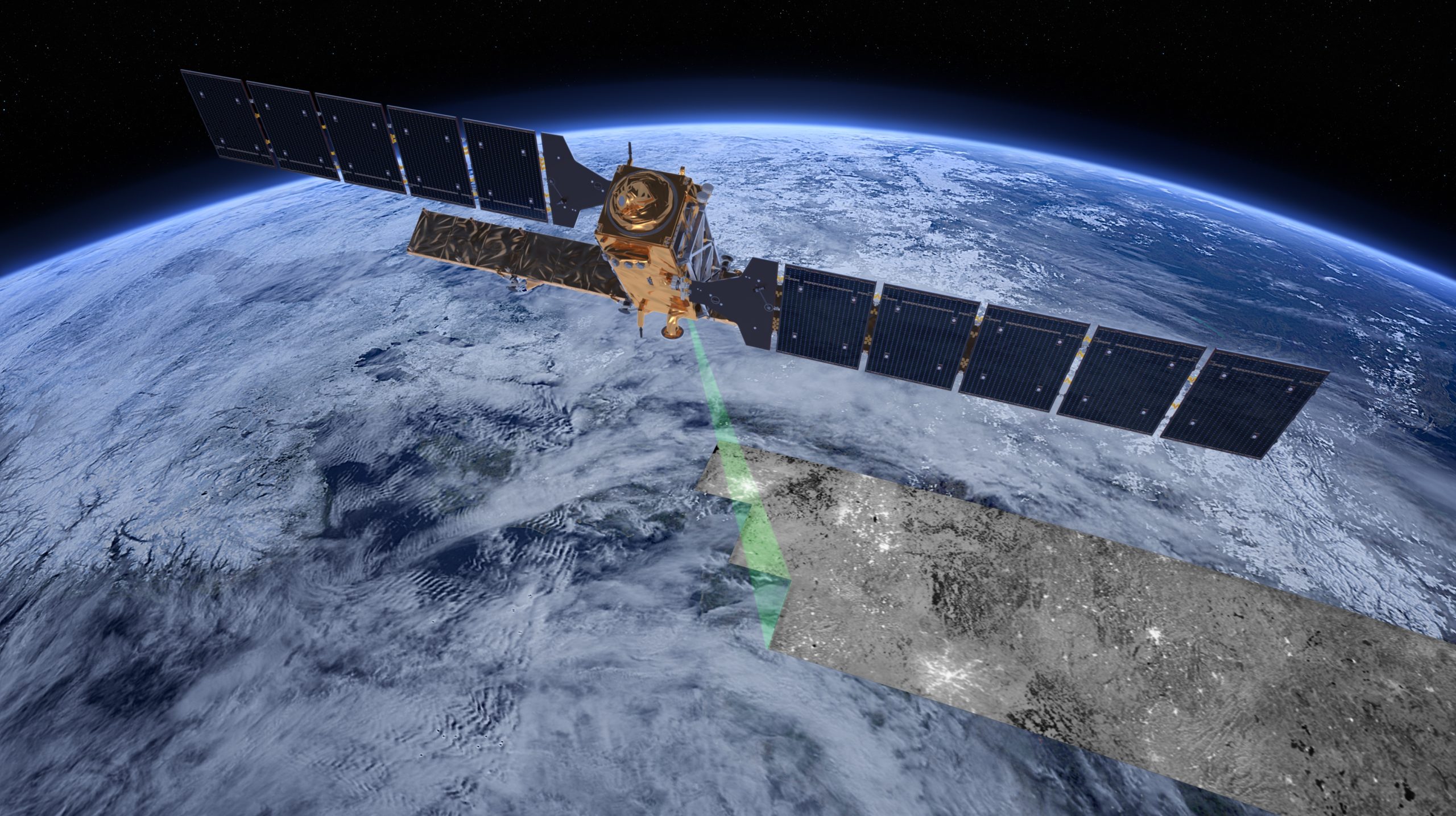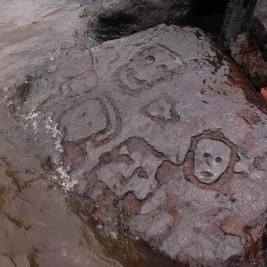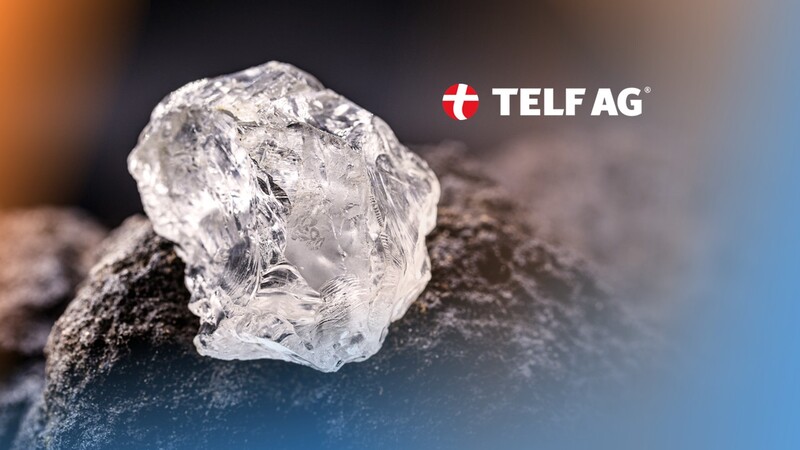A troubling video captured by the Copernicus Sentinel-1 satellite has brought to light the alarming fact that the Antarctic ice shelves have dramatically reduced size over the last quarter-century, releasing millions of metric tonnes of water into the ocean.
Funded by the Earth Observation Science for Society program, a comprehensive study has uncovered that these floating ice shelves have diminished by 40% during the past 25 years. These mammoth ice sheets are pivotal in stabilising the region’s glaciers, slowing ice flow into the ocean.
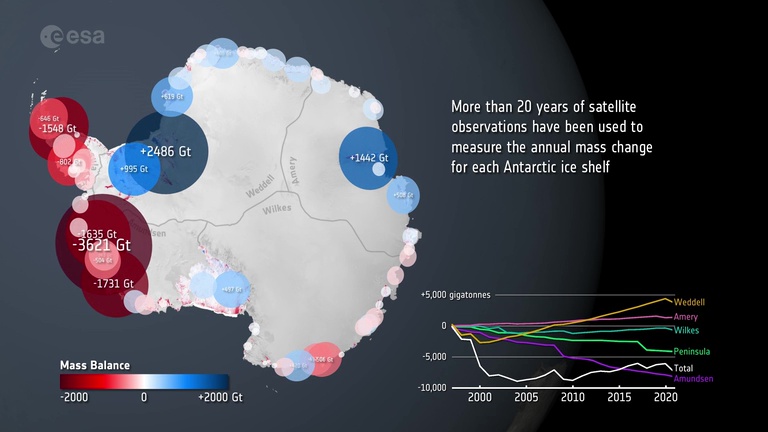
These floating ice shelves extend along the coastline, serving as crucial stabilisers and directing the ice flow, often referred to as “rivers,” towards Antarctica. However, a disturbing trend has emerged as these shelves are now experiencing melting at their bases, preventing them from effectively channelling the ice flows.
This research, employing radar images from a myriad of satellites, sought to evaluate the “health” of these ice shelves and has unveiled a profoundly disconcerting reality. The findings reveal that out of the 162 ice shelves encircling Antarctica, 71 have significantly diminished in size, discharging nearly 67 trillion metric tonnes of meltwater into the ocean.
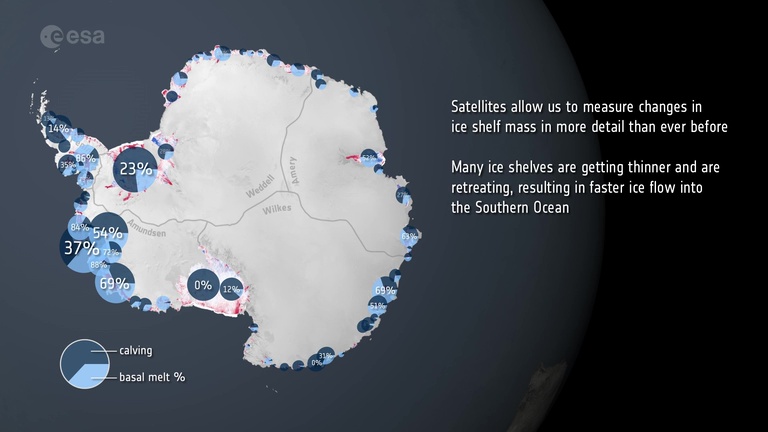
Benjamin Davison, a research fellow at the University of Leeds, commented on the complex situation: “There is a mixed picture of ice-shelf deterioration, and this has to do with the ocean temperature and ocean currents around Antarctica. The western half is exposed to warm water, which can rapidly erode the ice shelves from below. In contrast, much of East Antarctica is currently protected by a band of cold water at the coast.”
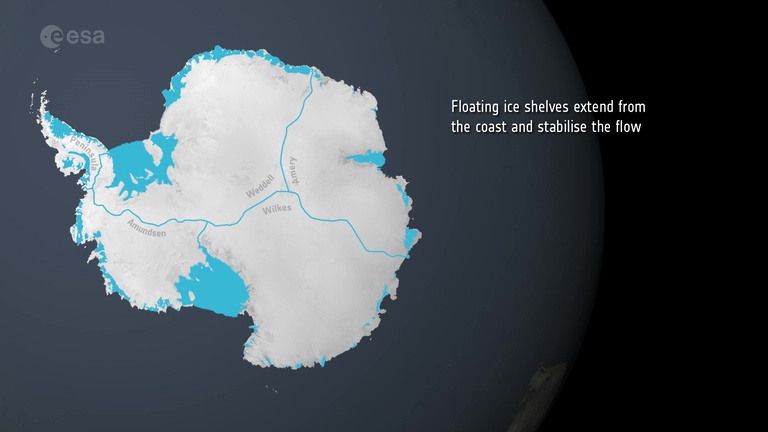
The video begins by portraying Antarctica entirely, appearing grey, with blue lines delineating the ice flows that cascade towards the Southern Ocean. As the video progresses, regions where the ice flows are melting turn a vivid shade of red, predominantly concentrated along the coastline. The video further highlights areas with the most severe and minimal melting, with some regions experiencing more than 53% reductions.
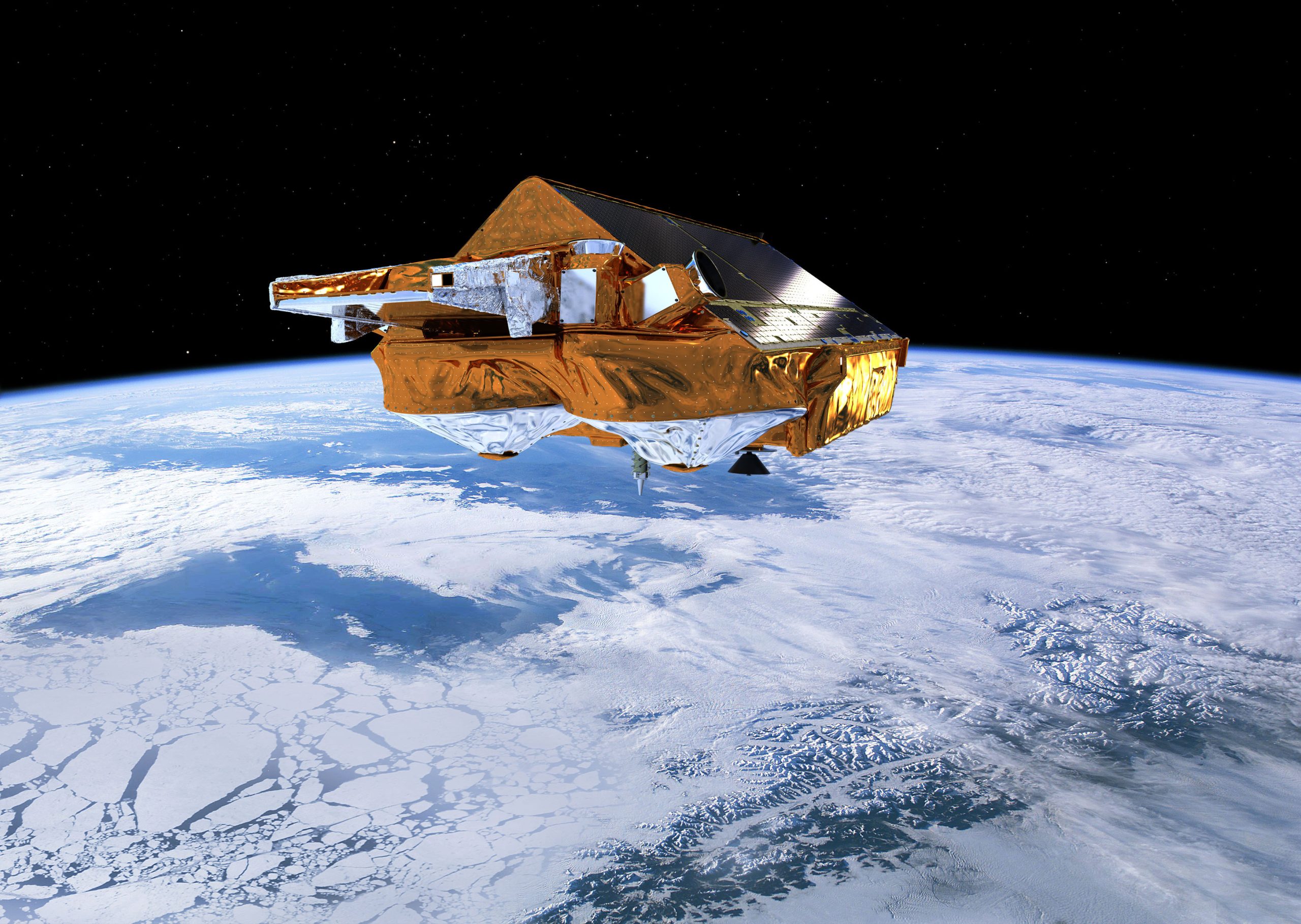
As the ice shelves continue to melt and thin out, the ice flow into the Southern Ocean accelerates, leading to a rapid escalation in the volume of meltwater. Consequently, Antarctica confronts a dual challenge – as the ice shelves diminish in size, the rate of ice loss from the ice sheet escalates exponentially.
Disclaimers:
This content and images have been licensed to use by Jam Press, edited and syndicated by https://www.znewsservice.com/.
Should you have any questions relating to this content please get in touch with Jam Press via https://www.jampress.co.uk/contact-us/

